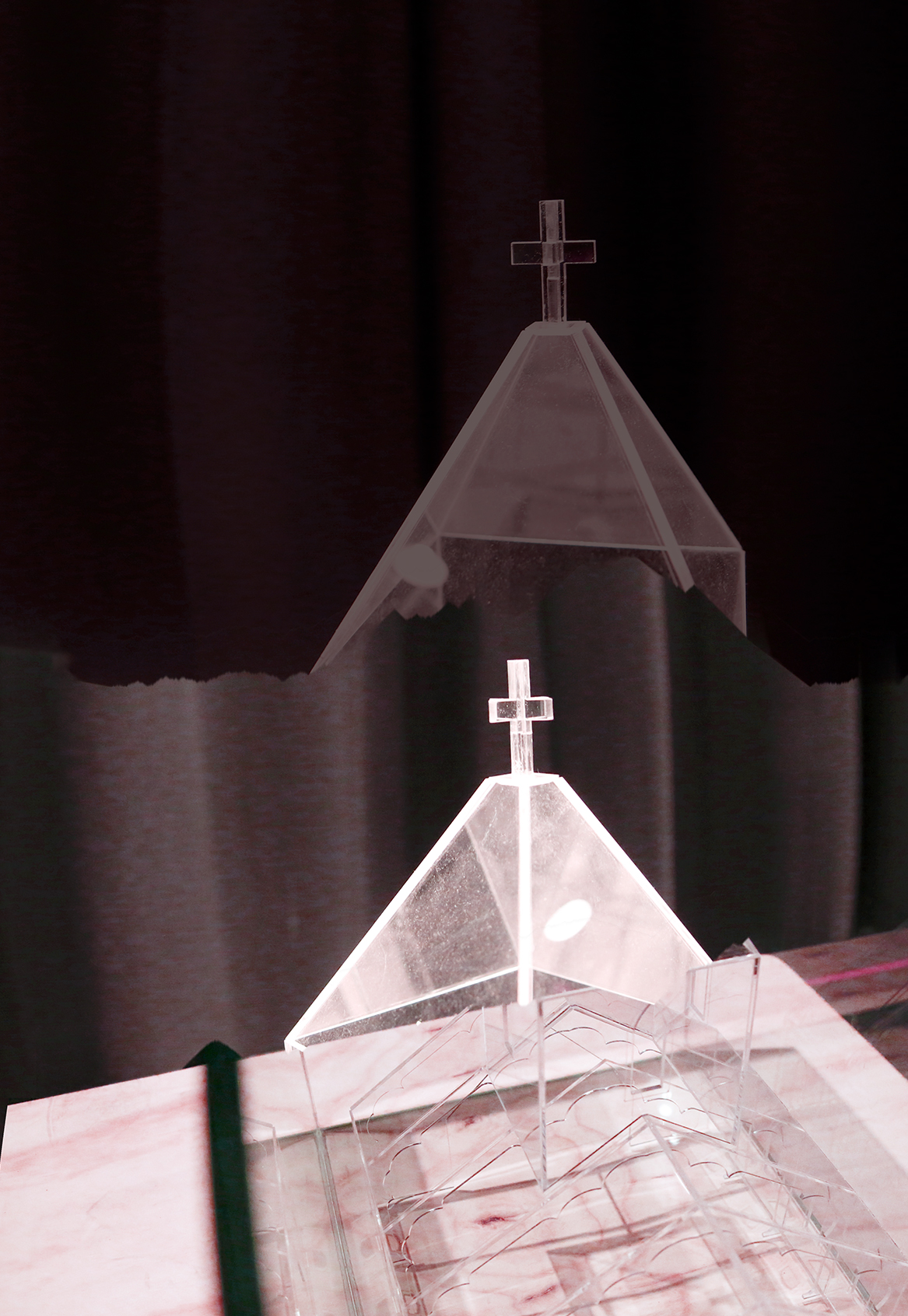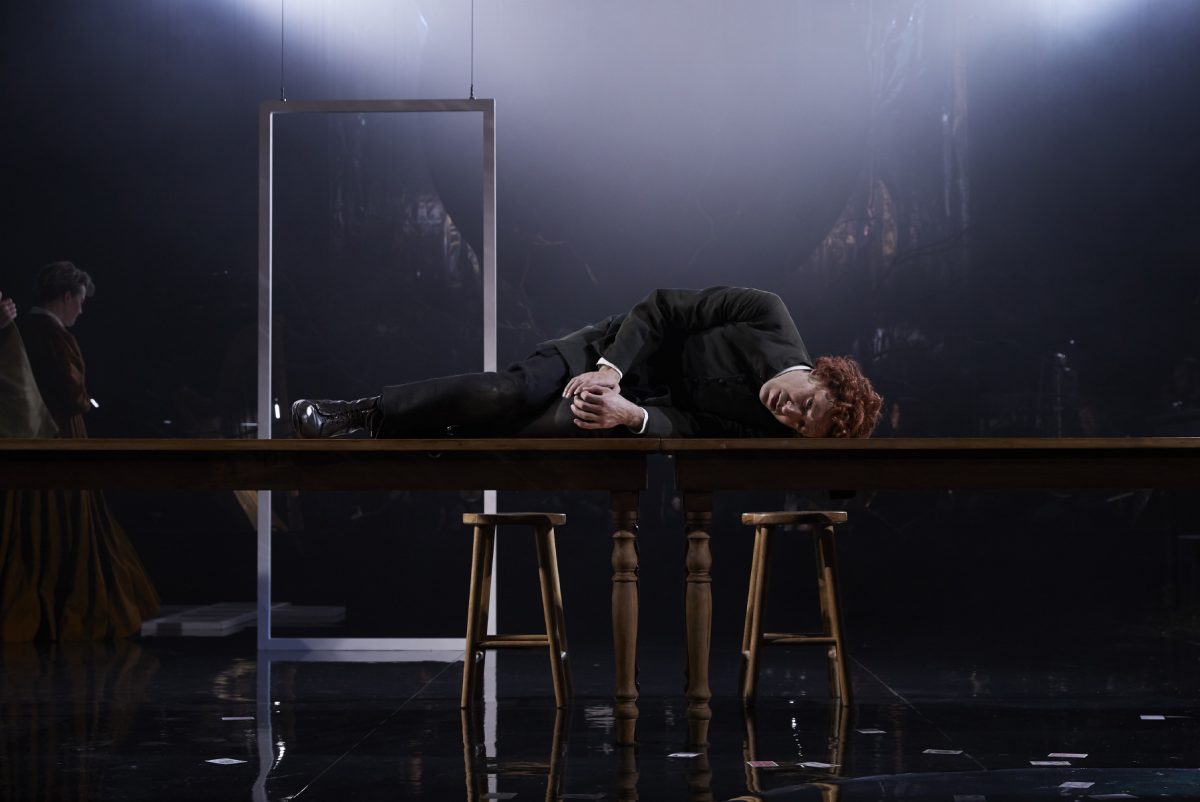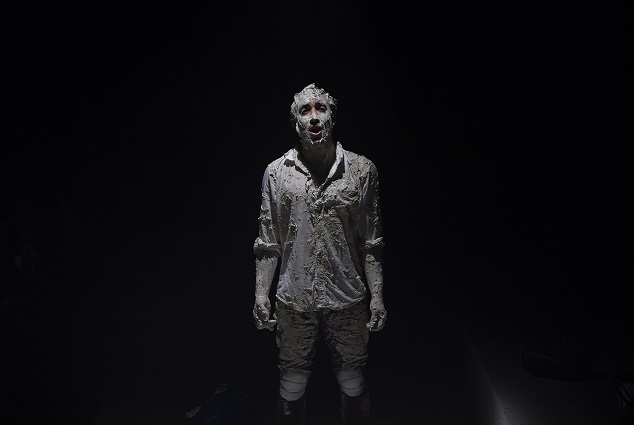DROWNING IN A
GLASS CHURCH
The challenge of staging Oscar and Lucinda
By Annarosa Berman
In bringing to life Elliott Gyger and Pierce Wilcox’s Oscar and Lucinda, which opens at Carriageworks on 27 July, director Patrick Nolan and designer Anna Tregloan’s biggest challenge was presenting the central image from Peter Carey’s novel – a man drowning in a glass cathedral floating down a river – on stage. Nolan says, with a laugh: “Having water in an environment where electricity is everywhere, is hair-raising.” As for glass, “If it breaks, you’re in a lot of trouble.” Glass and water are the two things you never put on stage. “Perhaps that captures the risk of putting on new opera!” Nolan says, laughing again.
Director and designer faced another headache: staging a musically complex new opera for which there was no recording. As Nolan says: “Normally you’d familiarise yourself with the score by listening to it, as this enables you to see how it will come to life.” Working on a production without having heard the music or studied the score is, to say the least, difficult. Tregloan adds: “The Oscar and Lucinda score is out there of course, but I’m not able to study such difficult music from the score only!”
After many conversations with lighting designer Damien Cooper, Nolan and Tregloan found the solution to their first problem: light. “Through reflection, light can conjure up both water and glass,” Nolan says. As for the music: they relied on Elliott Gyger and conductor Jack Symonds to fill in the gaps. “Elliott and Jack have been describing the music to us in as much detail as possible,” Nolan says. “Staging opera is always an act of the imagination, but with a new work, you really have to enter into it.”

In these circumstances, the libretto played an even more crucial role in informing the shape of the production. But for the creative team the process started even earlier, with research into as well as around the topic. Both re-read the novel and Tregloan watched the film, knowing that even though it didn’t directly relate to the project, audiences may have seen it. “It’s just good to know what sort of knowledge is out there about the story,” she says.
She and Nolan next explored the themes of Carey’s novel. “What Lucinda sees as chance, Oscar sees as providence,” Nolan says. “For both of them, what appears to be random over time forms a pattern. This is the central idea of the novel.”
When they read the libretto in detail, it opened up more ideas. “The text is particularly beautiful and evocative, even without music,” Tregloan says. “Like the novel, it’s very sharp and witty, and very beautiful and evocative metaphorically and visually. Reading it definitely affected the texture of the stage production.”
After the libretto, it was, in Nolan’s words, “very much a series of conversations; wandering down different paths until you eventually identify the key things that you want to communicate through the design and direction.” Director and designer came to the opera with a sense of its world gleaned from reading the book and the libretto. “The novel is a rambling, Dickensian, many-layered narrative, and what Elliott and Pierce have done, is to have reduced it down to its essentials,” Nolan says. “If the novel is a big, brothy, beefy stock, the opera is a fine consommé.”
A few themes landed early. Rather than working with naturalistic images, Tregloan says she tends to come up with metaphorical elements that have a logic of their own. “Very early on, we thought of the idea of randomness becoming order,” she explains. “And I wanted to include the idea of the Australian bush without having a naturalist scene. It took quite a while to work out how to present these ideas visually.”
Some ideas did not withstand the test of time. Performers, for example, were going to “move here and move that and then all these bottles would come on.” Tregloan says: “It reached a stage where we realised it would be physically too much for the performers to do.” She laughs. “All the elements are still there, but they’ve been pared down.”
“Staging opera is always an act of the imagination, but with a new work, you really have to enter into it.”
With imagery established, the next step was working out what the production’s performance language was going to be. “The novel, the film and the libretto are witty and funny, and in keeping with that we’ve created a playful space through containing and framing the story,” Tregloan says. “Understanding it as active theatre-making is important: rather than a factory, there’s a model of a factory. Similarly, performers start with everyday contemporary clothing, then, as part of the playfulness of creating theatre on the spot, they add costume elements on top of that, all on stage. We’re very overt about the fact that we’re story-telling.”
When we speak for this article, rehearsals have not yet begun. When they do, things may well change again. Says Nolan: “When the music finally comes to life, it will modify what we do. And it’s not only the music that will do it: the nature of directing any production is that you come to the rehearsal process with a set of ideas, and suddenly a whole lot of other things present themselves. That’s what I love about working in the theatre; it’s a constant process of change. And a deepening of awareness and understanding. I will be hearing the music for the first time when I step into that rehearsal room. And we won’t hear the full orchestral score until the final week of rehearsals.”
He laughs: “Who knows what might come out of that!”
Keep in touch
General Inquiries
- contact@sydneychamberopera.com
-
SCO, Carriageworks
PO Box 3035 Redfern, NSW 2016
Postal Address -
SCO, Carriageworks
245 Wilson St Eveleigh, NSW 2015
Resident Address - (02) 8571 9106

